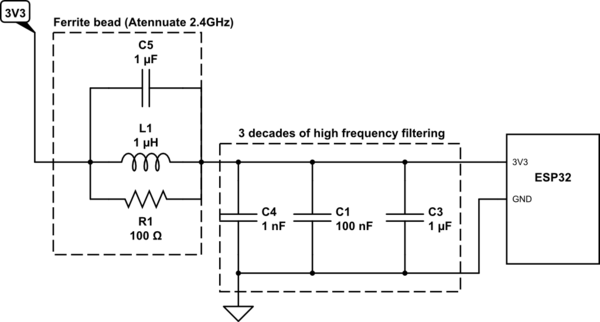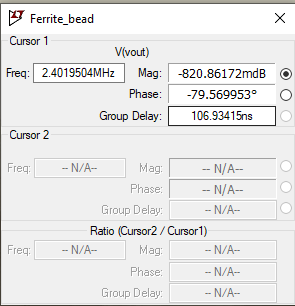I want to be able to filter the 3V3 power line going out of the ESP32 MCU. Since this "may" have a frequency around 2.4GHz (Wifi or Bluetooth antenna). This may then affect other components that also need the 3V3 power from the same net. I have implemented the below circuit thus far:

I then simulated this on LTSpice:
I first choose a general ferrite bead with the below specs:
The results of the simulation are below:
My questions:
Am I using the correct approach to simulate the ferrite bead?
From the results the attenuation is not sufficient, is there a way to calculate the values for the inductance, capacitance, and resistance so I can manually enter these values for the ferrite bead?
Edit 1:
I realized the frequency to attenuate was 2.4GHz and not 2.4MHz
Here is the simulation with the 2.4GHz frequency.
This Ferrite bead seems to be doing the job (I just need to confirm the current).
Edit 2:
Simulation results with modeling the capacitor with ESR and series inductance.
Edit 3:
Capacitors used:
22pF:C0201C220K8GACTU (ESR=0.149, ESL=28.1p)
0.1uF: C1206C104J3GACTU (ESR=0.0089, ESL=19.8p)
1uF: C1206C105K3RACTU (ESR=0.0124, ESL=0.3p)












